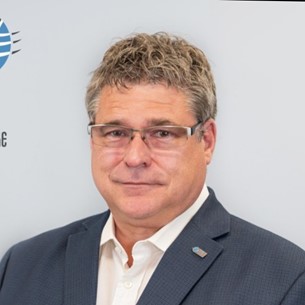SFP Pointe Noire is on the fast track to supplying critical minerals, growing the economy
Posted on
Millions of dollars in investments will ensure they are equipped for the future
Sept-Iles, Quebec is one of the province’s northernmost cities. Home to just over 28,000 people, it sits on the Gulf of the St. Lawrence where the mouth opens to the Labrador Sea. This makes it a convenient stop for cruise ships exploring the St. Lawrence. It also makes Sept-Iles an important gateway to a multi-billion dollar international minerals market.
Across the bay from the Sept-Iles is SFP Pointe Noire (SFPPN), an industrial hub. It features an impressive network of machinery designed to move ore from rail to sea-faring vessels, which makes it hub a fundamental access point to a global minerals supply chain.
“It’s a major contributor to the regional economy,” said Louis Gravel, SFPPN’s CEO. “It also has an important economic role at the provincial and national levels.”
SFPPN is the last step in the Quebec-Labrador mineral supply chain. Mines will extract the minerals and place them on a train. The locomotive then brings the load to SFPPN, which stores it until it can be loaded onto ships for transport to their intended destinations.
This is a complex operation that requires plenty of local and regional help. Half of its contracted services and suppliers come from the Sept-Iles region, a boon locally. SFPPN also partners with local First Nations to equitably collaborate with Indigenous-owned.

These partnerships help ensure SFPPN’s smooth operations and cement its contributions locally and nationally. In 2021 alone, the hub received 641 trains and loaded 11.2 million metric tonnes of minerals onto 77 vessels. This generated $3.9 billion for the Canadian economy and supported 300 well-paying jobs for local workers.
SFPPN regularly operates at peak capacity. So, Gravel and his team are working to expand capacity and prevent the hub from becoming a bottleneck in the supply chain. Since 2019, several private and public stakeholders invested more than $315 million to build a new electrical substation and new conveyors. SFPPN is also working with regional shortlines like QNS&L Rail to build new yard tracks and crossovers. They also recently increased the maximum allowed train length from 164 cars to 240, which will nearly double flow-through capacity.
Iron ore is the most common type of mineral passing through the hub, most of it from mines in Northern Quebec and Labrador. But as Quebec and Canada’s green economies expand, and the world looks to Canada for more of the commodities it needs, Gravel says SFPPN will adapt and grow with safety and security top-of-mind.
Gravel has been SFPPN’s CEO for three years. With these expansion plans in place, he has no shortage of things to be excited about.
“There’s enormous potential for growth,” he said. “It’s almost the perfect job.”
-30-